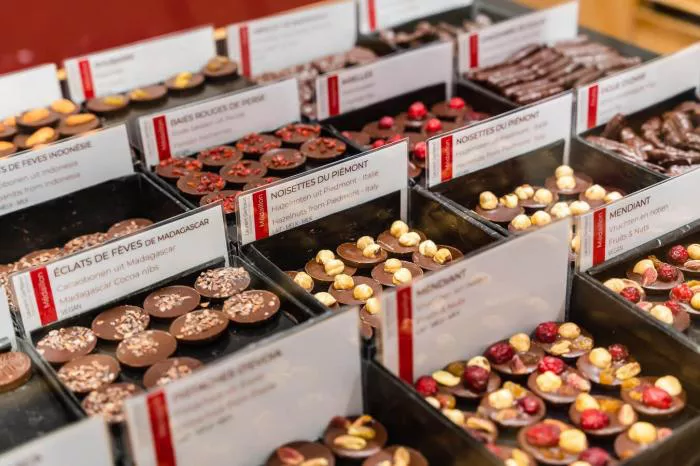Breastfeeding mothers often wonder about their diet and its effects on their baby. Chocolate is a common concern because it contains caffeine and other compounds that might impact the baby. This article explores how much chocolate is safe to consume while breastfeeding and offers guidance on making informed choices.
Understanding Chocolate Components
Caffeine Content
One of the main concerns with chocolate is its caffeine content. Caffeine is a stimulant that can pass through breast milk to the baby. While the amount in chocolate is lower than in coffee, it still matters. Dark chocolate contains more caffeine than milk or white chocolate. For example:
- A typical 1-ounce (28g) serving of dark chocolate contains about 12-25 mg of caffeine.
- Milk chocolate has around 5-10 mg per ounce.
- White chocolate contains negligible amounts of caffeine.
Most experts recommend limiting caffeine intake to about 200-300 mg per day while breastfeeding. Therefore, a moderate amount of chocolate is generally safe.
Theobromine
Theobromine is another stimulant found in chocolate. It has similar effects to caffeine but is milder. Dark chocolate contains higher levels of theobromine than milk chocolate. This compound can also pass into breast milk, though it rarely causes issues unless consumed in large quantities.
Sugar and Additives
Many chocolates contain high amounts of sugar and additives. Excess sugar can contribute to weight gain, mood swings, and energy crashes. Some chocolates also contain artificial flavors and preservatives, which may not be ideal for a healthy diet.
Effects of Chocolate on Breastfeeding Babies
Possible Fussiness or Sleep Issues
Babies are sensitive to caffeine and theobromine. If a breastfeeding mother consumes large amounts of chocolate, the baby might become fussy or have trouble sleeping. However, this usually happens only if the mother consumes excessive amounts. Observing your baby’s behavior can help you gauge their sensitivity.
Allergic Reactions
Some babies might show allergic reactions to chocolate. This is usually due to milk proteins in milk chocolate or other ingredients like nuts. Symptoms might include:
- Rash
- Diarrhea
- Vomiting
- Colic-like symptoms
If you notice any of these signs, consult your pediatrician.
Safe Chocolate Consumption Guidelines
Stick to Moderation
Moderation is key. Most experts agree that small to moderate amounts of chocolate are safe while breastfeeding. This generally means:
- One to two small servings of chocolate per day (about 1-2 ounces or 30-60 grams)
- Limit dark chocolate intake due to its higher caffeine and theobromine content
Choose Quality Over Quantity
Opt for high-quality chocolate with fewer additives. Dark chocolate with at least 70% cocoa provides more antioxidants and less sugar. Avoid chocolates with artificial ingredients or excessive sweeteners.
Observe Your Baby’s Reaction
Every baby is different. Some may be more sensitive to caffeine or theobromine than others. After consuming chocolate, watch for any changes in your baby’s behavior. If you notice increased fussiness or sleep disturbances, consider reducing your intake.
Timing Matters
If you enjoy chocolate, try consuming it earlier in the day. This reduces the chance of it affecting your baby’s nighttime sleep. Also, breastfeeding shortly before consuming chocolate can minimize the baby’s exposure to caffeine through breast milk.
Alternatives to Chocolate
Carob
Carob is a caffeine-free alternative that tastes similar to chocolate. It is naturally sweet and rich in fiber, making it a healthier option. You can find carob bars, chips, or powder in most health food stores.
Dark Chocolate with Low Sugar
Look for dark chocolate with a higher cocoa content (85% or more) and minimal added sugar. These options provide the rich taste of chocolate with fewer stimulants.
Cocoa-Free Treats
If you crave sweets but want to avoid chocolate, consider snacks like fruit, yogurt, or nut-based bars. These options provide natural sweetness without the caffeine or theobromine.
Conclusion
Chocolate can be enjoyed while breastfeeding, but moderation is essential. The caffeine and theobromine in chocolate can pass through breast milk, potentially affecting your baby. However, most babies tolerate small amounts well.
Choose high-quality chocolate, limit your intake, and monitor your baby’s reaction. If you notice any adverse effects, reduce your consumption or consider alternatives like carob.
Breastfeeding mothers deserve to enjoy treats, and with careful choices, chocolate can be part of a healthy and enjoyable diet.
Related topics:


